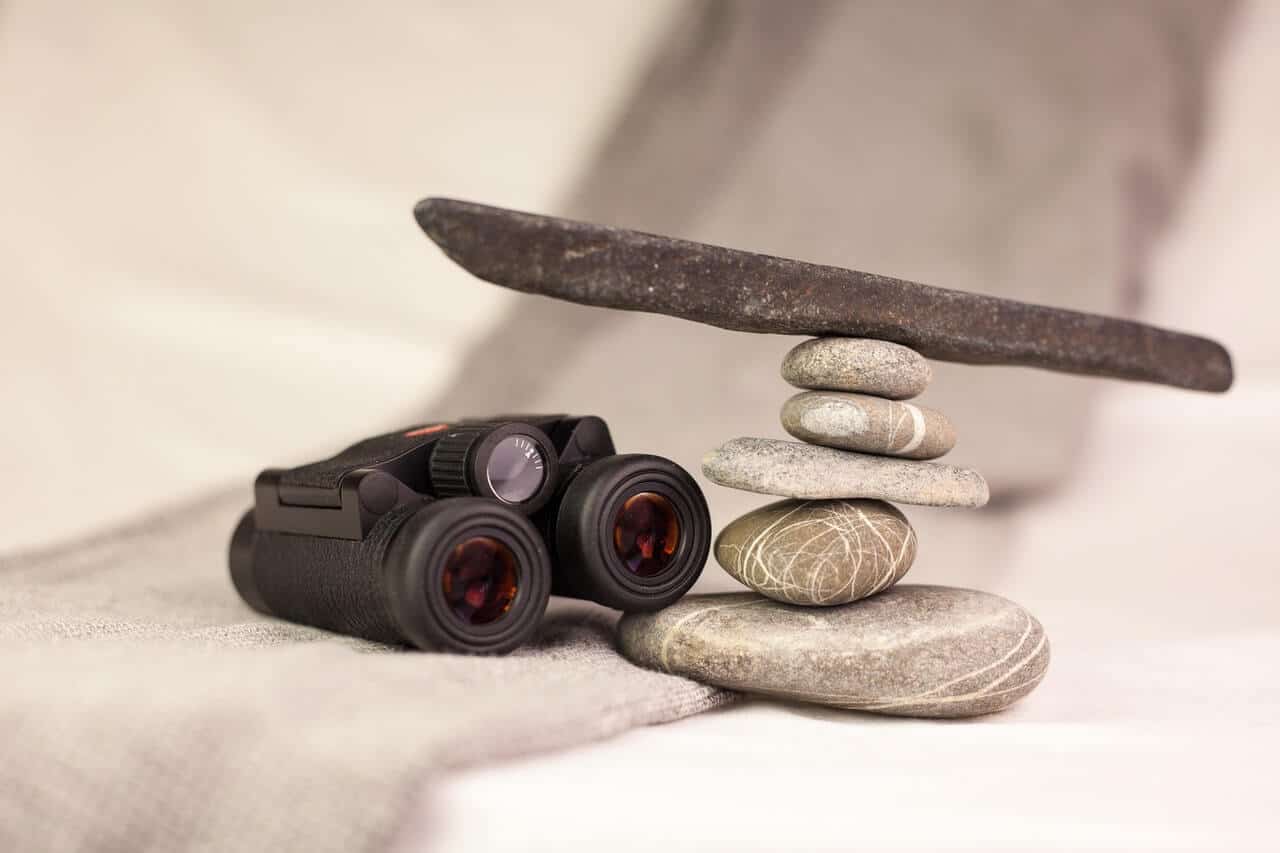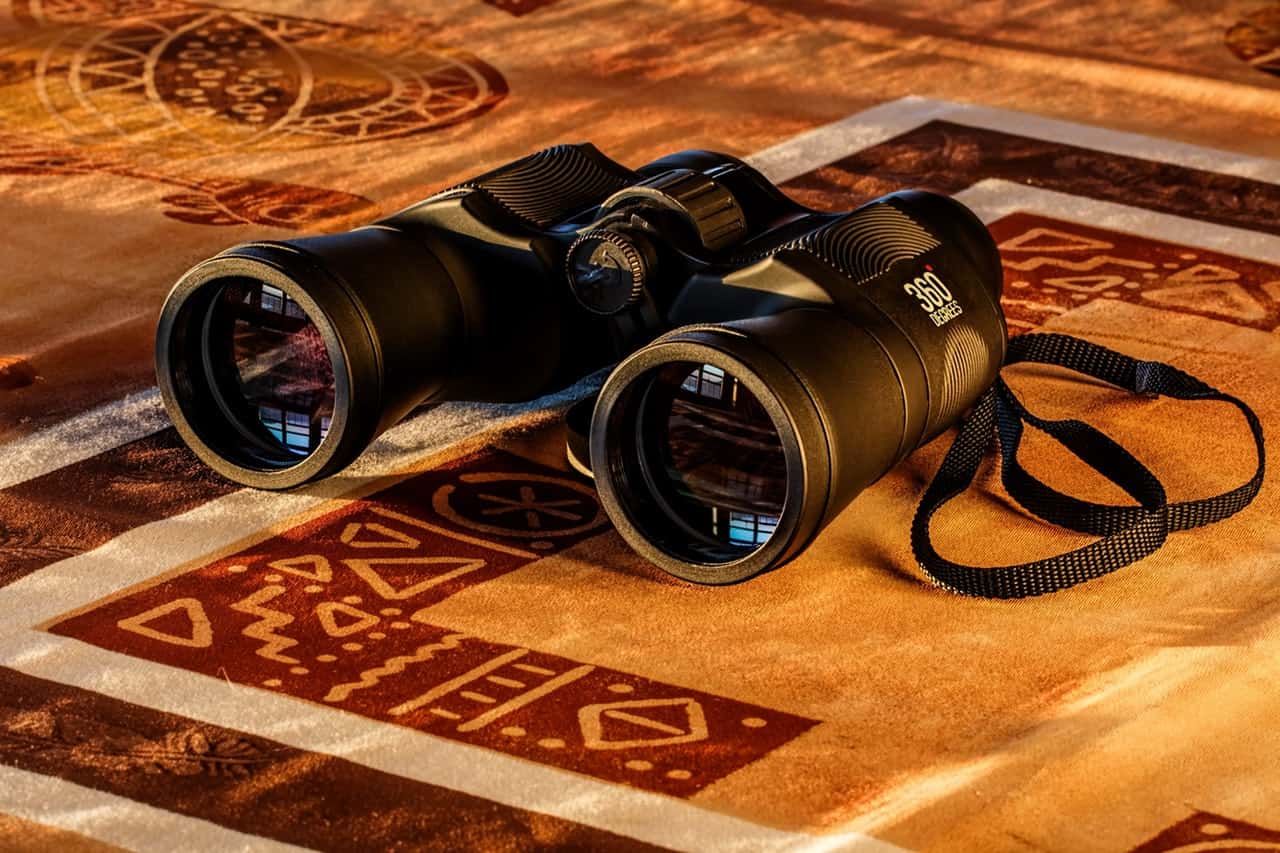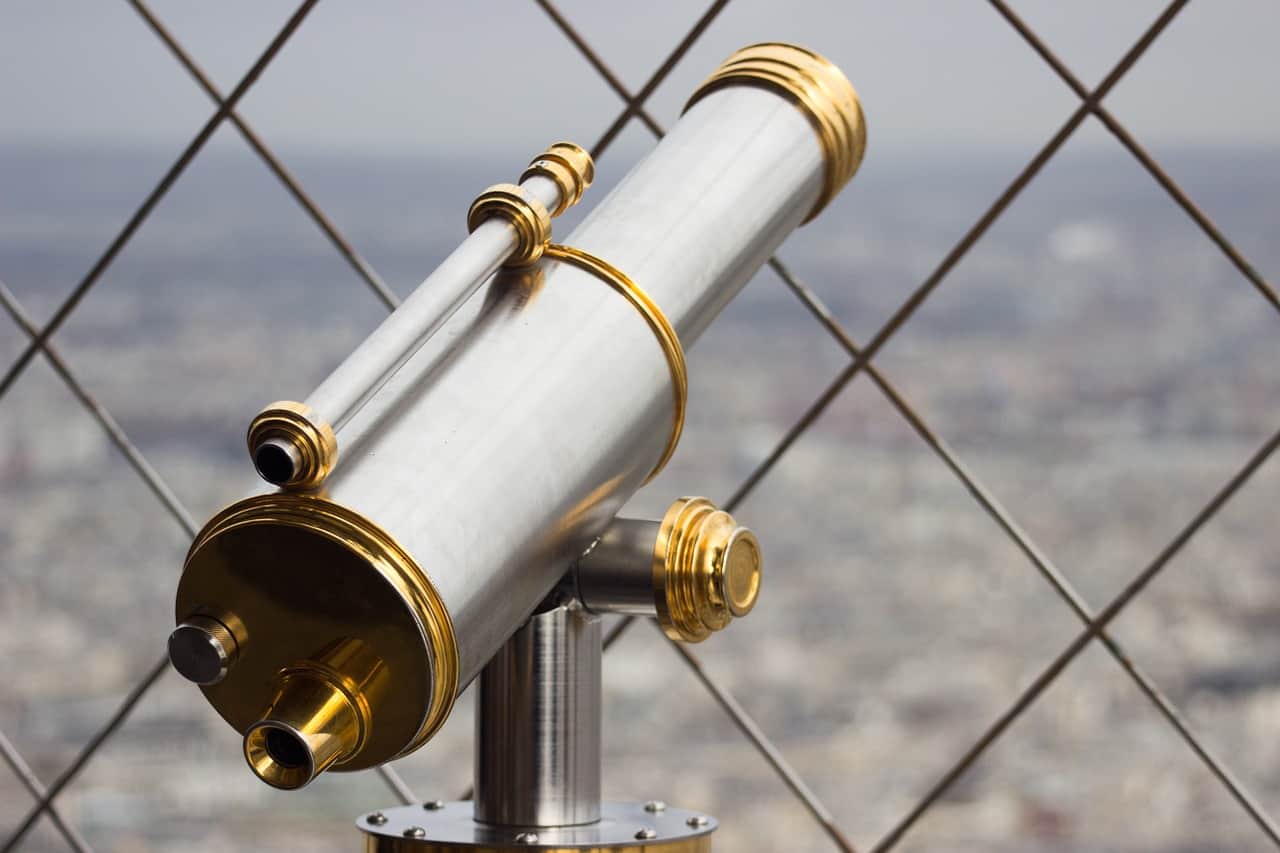Any nature lover would agree that it’s highly disappointing when you can’t capture/save a breath-taking sight. Distance and the absence of compatible gear are the primary reasons which don’t let you enjoy an activity to the fullest.
But, when you have digital binoculars or know how to capture images with a standard binocular, nothing can stop you from saving these incredible moments. Binoculars incredibly help adventurers/hobbyists, and when paired with photo-capturing ability, they make your activities even more exciting.
Whether you watch birds or observe wildlife, a practical binocular always comes handy. Therefore, in this guide, we’ll talk about digital binoculars and some photography tricks that’ll help you enjoy your adventures.
How to do binoculars photography?
Now, we all know how binoculars work and how cameras work. The main factor that makes this technique more helpful is that you can do both glassing and photography simultaneously. Although there are some other important factors, it all boils down to viewing and capturing distant objects with a single gadget.
If you’re a new glasser, be clear that binocular photography is of two types; one we do with specified digital binos and others with standard binos. Let me further explain it:
1. Digital binoculars
As the name indicates, these binoculars come with built-in cameras that magnify/clarify and click a view simultaneously. When you hold a digital bino, you see a menu (mainly on the LCD) to select whether you capture or tape a view.
These binoculars aren’t that common, mainly because of their price range and limited image resolution. Since glassers want impressive picture quality, an average digital binocular doesn’t suffice their requirements.
2. Standard binoculars
These are your everyday binos designed to cover a broad region in a glance with no compromise on the optical performance. When you have to click/record something with these binoculars, you use your mobile’s camera.
It’s a simple process where you set your mobile device’s camera on the binocular’s lens and click. The pictures you get are according to the binocular’s magnification, i.e., 7x.
Since you can use any iPhone/Android device to do binocular photography, it’s ideal for all adventures. The better your phone’s camera, the more precise the pictures. Here, the bino’s only role is to magnify a distant object when you can’t go near it.
Birders and safari lovers prefer this photography trick as they don’t have to separately buy a digital camera. If you want to zoom a particular object without seeing those distorted pixels, place your mobile in front of your bino’s eyepiece, and the final imagery will surely amaze you.
How do digital binoculars work?
Digital binoculars are no different than cameras except for the fact that they massively magnify a view. When your preferred object isn’t physically approachable, a digital binocular will ensure you observe and save it without struggling.
• Structure
When we talk about the build, digital binos often have narrow bodies that reduce their weight to some extent. Between the two barrels of a digital binocular is the built-in camera, which often has an LCD for display.
Since the camera and barrels are well-tugged, they perform like a single unit instead of giving the illusion that the LCD is separately attached.
Also, the camera screen generally has a foldable design that protects it from scratches. When your mission is over, fold this screen and safely pack your digital binocular for future endeavors.
• Working
These binoculars offer quick and easy photography with no compromise on quality. When you’re out scouting or hunting, hold your digital bino straight and focus the aim point before recording.
Once the object is clear, press the record/click button on the camera, and it’ll save the sight as it is.
One thing to remember is that digital binoculars don’t have default storage, and you’ll need a micro SSD card for it. The card slot can either be on the top or side of a camera, depending upon the model you opt for.
When you go out for extended glassing activities where it isn’t easy to manage a mobile and binocular simultaneously, these binos make photography a quick task. Also, your mobile phone may run out of battery, which may cost you an incredible shot. Therefore, opting for a safer option is always advisable.
However, before concluding whether these binos should be in your gear, check out their pros and cons in the following section.
Digital binoculars’ pros
When you get a two-in-one gadget, it’s more portable and practical. However, it’s undoubtedly heavy and needs more care. To give you a clear idea, I’ve listed the pros and cons of digital binoculars:
• Convenience
Digital binoculars make photography a manageable task, irrespective of your target. Whether you like recording exotic wildlife or your favorite soccer team, these two-in-one binoculars make it more convenient.
You simply adjust the aim point and start clicking/recording; no balancing trouble and discomfort at all. Glassers prefer these binoculars because they don’t have to carry anything else while heading out, a binocular is sufficient for their distant viewing and photography passions.
• Adjustable storage
Digital binoculars come with separate card slots, which is ideal for extended missions. If your glassing adventures include hundreds of photographs and videos, this expandable storage option is a good choice.
You can select the SSD card, depending upon your plans. Once you’re back from a glassing mission, you can easily open that data on a computer and use it as you please. Since mobile phones often have limited storage, a card is always better.
• Night vision compatibility
Most digital binoculars are night-vision compatible, which increases their practicality. When you don’t need a light source to capture your preferred scene, completing the task is always easier.
Digital binoculars make photography an easy-to-manage task, no matter what the activity is. Whether you scout birds before dawn or hunt at night, these smart optics increase your adventures’ success.
• Fast-shutter clicking
Apart from easy focusing, digital cameras also offer fast-shutter photography, which enhances picture quality. For example, if you are chasing a moving target, this fast-shutter ensures the shot is crystal clear. Even when there is no ambient light, your digital bino will capture that frisky target’s superb shot, eventually adding to the thrill.
Digital binoculars’ cons
Digital binoculars aren’t void of cons, and you must consider them before planning anything.
• Not weatherproof
A glasser’s equipment must be sturdy enough to support his activities, irrespective of the weather. But unfortunately, digital binos don’t come with purged lenses or water-tight housings. This factor limits your binocular’s usability and exposes it to several damages along the way.
To enjoy your upcoming ventures, get a customized digital binocular cover, and it’ll reduce the weather’s impact to some extent.
• Poor picture quality
Here comes the primary constraint in binoculars photography, the terrible picture quality. Most available digital binoculars offer a resolution of up to 8 megapixels, which is way behind than it should be.
If you expect some spectacular shots with an 8mp camera, that’s not happening. That’s why professional glassers prefer clicking pictures with their mobile/DSLR instead of a digital binocular because they’re better.
However, when your clicked pictures don’t get displayed and you keep them for personal record, these binoculars perform fair enough.
• Limited FOV
Binoculars are meant to make your pursuits easier and impeccable. When you can’t cover a wide area in one go, it doesn’t serve the purpose of a premium-quality optic. And sadly, that’s the case with digital binoculars.
These binoculars offer a narrower field of view than other gadgets and might disturb your activity’s thrill. But if your aim point is mostly mid-ranged, these smart binos are best for that.
• Short battery life
Whenever you travel with a digital binocular, always keep a power backup in your backpack. The reason behind this suggestion is these binos’ sudden breakdowns (well, not all but some of them do shut down just like that). You might be recording a video, and your binocular would shut-off, leaving you with no option but to quit. That’s why always consider an optic’s working capacity before testing it in an important mission.
• Heavier
This goes without saying; when two gadgets are combined, the resulting product is undoubtedly heavy. Although these photography binoculars have narrow designs, they weigh significantly more than standard ones, making their handling a task for you.
Now when we know the good and bad aspects of digital binoculars, let’s see how your everyday binos can be used for photography.
Can a regular binocular be used for photography?
Yes, why not. A high-end binocular comes with incredible lenses that make glassing a pleasant experience for you. And when you pair one such bino with your smartphone, photography doesn’t remain a task anymore.
If you learn balancing your mobile device with the bino’s eyepiece, you can click incredible photographs.
What equipment do you need for binocular photography?
• Binoculars
A high-quality binocular with good FOV and multicoated lenses goes a long way to support your activities. When you try photography with a poorly-coated pair of lenses, the results are never par excellence. Therefore, make sure your binocular is free of edge-fringing and light scattering while using it for mobile photography.
• Tripod
Holding the binoculars and a mobile phone straight isn’t feasible, especially in an outdoor setting. That’s why shift the bino’s weight on a stable tripod and enjoy effortless photography. The tripod lets you stand comfortably and focus the aim point without hassling with the wind or uneven terrain.
As hunters/wildlife lovers roam in uneven, novel terrains, they shouldn’t go without a sturdy binocular stand. When you have a reliable tripod, the photographs turn out amazing.
• Bungee cord/Velcro strap
Where some photographers prefer hand-held devices, others prefer a well-snug system. When you shift the binoculars on a pod, a Velcro strap or bungee cord tucks your mobile with the eyepiece to offer continuous shots/clips. This strap comes handy when you record videos through your phone and wish to avoid jitters. Tightly tie your mobile with the bino’s eyepiece and record whatever you want.
• Mobile phone
As I said earlier, the better your mobile’s camera, the better photography you can do. Whether you record your activities for personal reasons or share it on your blog/channel, a good-quality mobile camera never goes wrong.
However, keep your phone’s cover on to protect its screen from scratches etc. While wandering outdoors, your phone will let your record nature’s glories without much effort.
What must a digital/photography binocular have?
• High magnification
As photography binoculars are used to capture far-off locations/objects, they must offer a reliable magnification capacity. A binocular that offers above 8x magnification is ideal for any photography venture. But if you need even better results, opt for a higher power like this Celestron SkyMaster binoculars.
• Easy-to-read interface
A big LCD/LED lets you easily read and feed the instructions amidst an activity. If altering the binocular is hard, i.e., its buttons are small, you’ll struggle with taking unshaken pictures. Therefore, opt for an apt and ergonomic binocular, whether digital or standard. This CREATIVE XP digital binocular is the classic example of a smart, ergonomic, and practical gadget.
• Expandable memory
As I said above, digital cameras are preferred because of their expandable memory. When you can easily store an extensive amount of data, you feel free to capture every moment/sight of your activities.
• Coated lenses
Lenses play the central in binoculars photography. If your bino’s lens glass scatters light, it negatively impacts the image quality. To get crystal-clear pictures, check the lenses of a binocular beforehand and prefer one that offers multi-coating.
• Premium-quality prisms
Porro prisms are better for binoculars photography because they move a light beam in a wave’s form, eventually controlling the jitters. Even if your hand shakes while you capture a sight, Porro prism binoculars don’t get much affected.
Which activities need binoculars photography?
Well, this entirely depends upon your interests. Whether you’re a birder or hunter, recording what you observe outdoors is always an appealing activity. However, here are the few domains where glassers prefer photographing their observations.
• Birding
Observing the feathered fellows is one of the most popular pastimes for glassers. And when they’re at it, they prefer capturing a few spectacular scenes too. If you’re a birder, binoculars photography will surely help you develop an album with beautiful shots.
• Wildlife photography
Going close to those exotic wild beings is never safe, and you must maintain a distance. However, this doesn’t mean you can’t capture them in their natural habitat. Simply take along a good digital binocular or a mobile device and capture your target, regardless of the distance.
• Hiking/mountaineering
The only thing better than hiking on new trails is clicking those mountains’ amazing pictures. If you’re developing a travelogue, make sure to personalize it with your photography skills.
• Photography
Apart from other glassers, photographers also love using binoculars in their pursuits. When you take a marvellous picture with the help of a binocular, it indeed increases the excitement of any activity. Other than the mobile phone, photographers also use their full-sized DSLRs to do binoculars photography.
When someone needs to capture a distant point in high-resolution, use an excellent camera and binocular without any second thought. Nature photographers and wanderers prefer premium-quality binos in their gear, as they always come handy.
Also Read: can I get binoculars on my iPhone?
Final words
Outdoor glassing activities feel more thrilling when you click a few difficult pictures on-the-go. Although binoculars photography requires practice, it’s a worth-learning skill. I’d suggest you start with the binocular you already have by pairing it with your mobile phone. Once you’re confident about it, switching to digital binocular isn’t difficult.
However, consider the challenges and down points of these photography binoculars before deciding, as that’ll impact your future adventures. If you have a good-quality mobile, practice binocular photography with it, and if you don’t, get a more convenient option, i.e., digital binoculars.
Whatever you decide, don’t forget to capture those rare sights you see while hunting or travelling!






